Visit Jaganmohan Palace For A Journey Through Royal Splendour And Art In 2025
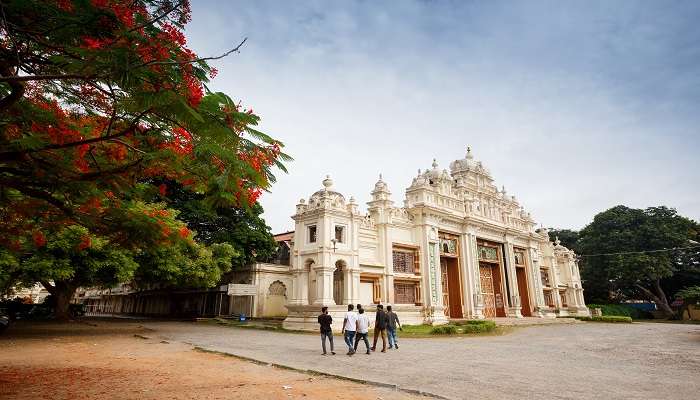
Situated at the heart of Mysore, the magnificent Jaganmohan Palace resonates with historical significance and exudes grandeur. Built in 1861 under the rule of Krishnaraja Wodeyar III, this superb architecture has witnessed royal luxury, power, and a rich past. After a fire destroyed the old Mysore Palace, Jaganmohan Palace was established as a royal residence. Now, it houses the Jayachamarajendra Art Gallery, protecting a vast art and culture collection. Filled with intricate carvings, stunning murals, and over 2,000 precious artworks, this place embodies Mysore’s rich cultural heritage. Visitors are welcome to explore this palace daily, where every corner is filled with stories of greatness and tradition.
The Timeless Beauty Of Jaganmohan Palace
Built in 1861, the palace was a haven for the royal family and observed crucial events in Mysore’s history. Today, it invites guests to discover its sacred rooms, decorated with detailed carvings and colourful murals that showcase the area’s diverse cultural history. Explore more, and you will come across the Jayachamarajendra Art Gallery, a valuable collection with more than 2,000 paintings by famous artists, both local and international. Every part of the palace tells a story of wealth and heritage, from captivating artwork to beautiful artefacts.
1. Jaganmohan Palace: The Magnifico
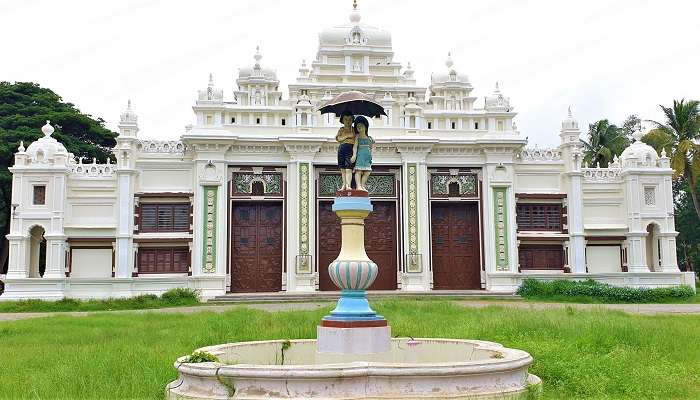
The splendid Jaganmohan Palace is located in the centre of Mysore, a city known for its extravagant palaces, showcasing architectural excellence and historical importance. Constructed in 1861 under the rule of Krishnaraja Wodeyar III, this palace initially acted as a getaway for the royal family and later, from 1897 to 1912, functioned as their primary dwelling. The Jaganmohan Palace not only displays the magnificence of the Wodeyar Kings but also encompasses a rich history of Mysore. It serves as an art gallery and a location for different cultural activities, allowing guests to see Mysore’s regal history and artistic heritage.
Must Read: Places To Visit Near Mysore
2. History Of Jaganmohan Palace
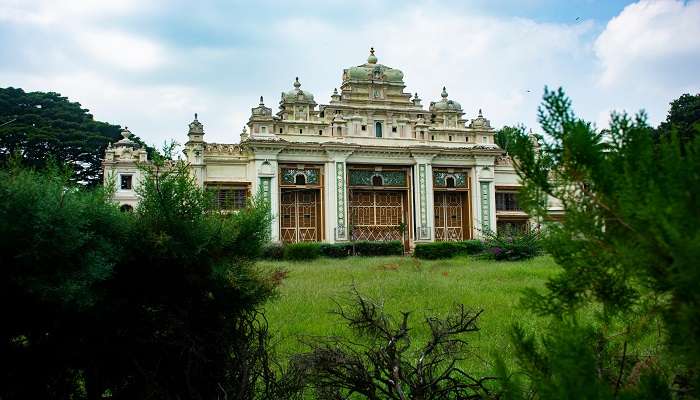
Jaganmohan Palace, one of the most ancient and historically significant buildings in Mysore, stands as evidence of the city’s royal heritage. Constructed in 1861 by Krishnaraja Wodeyar III, the palace became a shelter for the royal family following a destructive fire that razed the former Mysore Palace during Princess Jayalakshmanni’s wedding in 1897. This magnificent palace was home to the royal family until the construction of the new Mysore Palace in 1912. In this timeframe, Jaganmohan Palace was the focal point of essential occurrences like everyday durbars, the specific Dasara durbars, and the crowning of Krishnaraja Wodeyar IV in 1902. It was also the location for the initial meeting in 1907 of the Mysore Legislative Council and the initial graduations of Mysore University. The palace is still a cultural centre and holds different events and displays. At the same time, its impressive hall, decorated with detailed carvings depicting the ten forms of Vishnu, remains a famous sight for tourists.
3. Architectural Brilliance

The Jaganmohan Palace in Mysore is a remarkable illustration of classic Hindu architecture, showcasing the region’s rich artistic and cultural heritage in its three-story design. Built in 1861, the palace was expanded 1900 to include a grand front with three entrances and a large hall. The intricate carvings on the front of the palace showcase its architectural excellence as soon as visitors arrive. The entrance door is imposing, showcasing intricate carvings of the Dashavatara, the ten incarnations of Lord Vishnu, on both sides of the solid oak structure. The interior of this stunning palace is decorated with murals depicting the grandeur and festivities of Mysore Dasara, the royal family’s history, and important events of the past. The palace’s entablatures, featuring religious symbols and miniature temples, add to the spiritual and historical importance of the building. The Jaganmohan Palace continues to enchant visitors with its combination of art, history, and religion, showcasing the regal heritage of Mysore.
Suggested Read: Venugopala Swamy Temple In Mysore
4. Jayachamarajendra Art Gallery
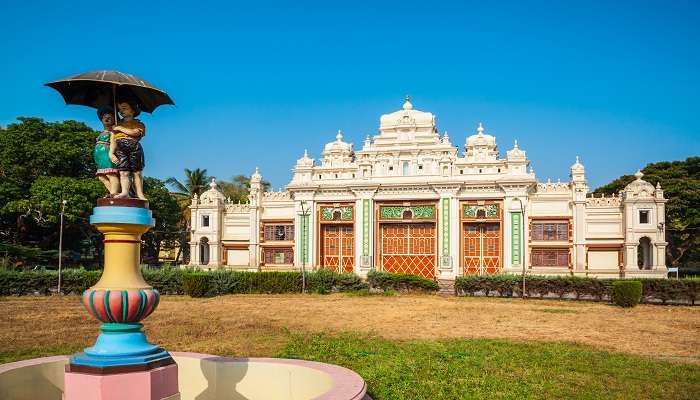
The Jaganmohan Palace was transformed into the Jayachamarajendra Art Gallery in 1915 and later renamed in 1955. It is seen as one of the premier art galleries in South India. The cultural centre houses over 2,000 paintings, showcasing styles such as Mysore, Shantiniketan, Mughal, and Western art. The walls are decorated with renowned works of art by Indian artists like Raja Ravi Varma and Rabindranath Tagore and outstanding pieces by international artists such as Rembrandt, Aless Caddy, and P.P. Ruben. Visitors are treated to a magnificent display featuring the artistic traditions of Mysore and beyond, appealing to those with a passion for art. The art gallery exhibits various sculptures, military weapons, ancient coins, and currencies, as well as paintings, demonstrating the richness and heritage of the Mysore royal family.
5. Beyond Paintings: An Exhibition of Royal Heritage
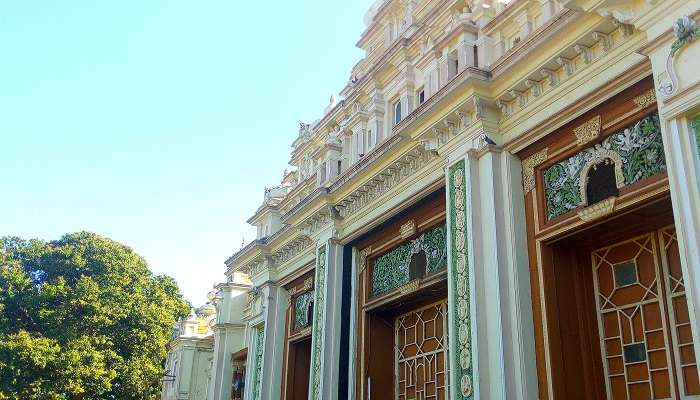
The Jayachamarajendra Art Gallery features paintings and a remarkable assortment of artefacts that once belonged to the royal family of Mysore. In its assortment are intricate carvings crafted from ivory and sandalwood, Mysore artworks embellished with gold leaf, and a captivating French musical clock. Every display narrates a tale from history, safeguarding the cultural significance of Mysore. The Jayachamarajendra Art Gallery carefully presents exhibits safeguarding the city’s artistic and historical legacy. The selection consists of brass, pottery, furniture, and keepsakes, offering a glimpse into the lavish life of the royal family. The diverse range of exhibits in the gallery connects the past with the present, promoting an appreciation of the various cultural heritage that defines Mysore.
Suggested Read: Kesare Village
6. Timings And Entry Fee At Jaganmohan Palace
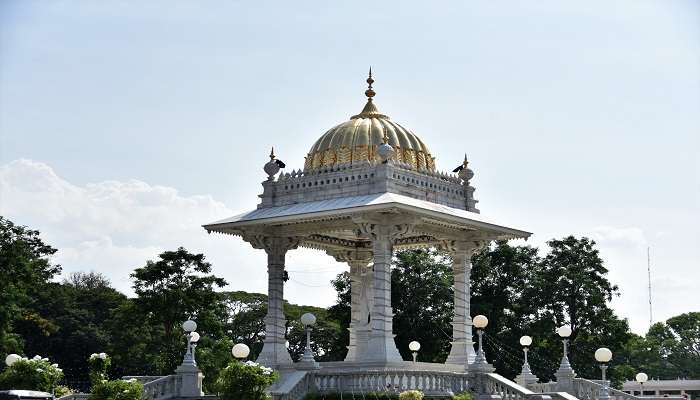
Entry to the Jaganmohan Palace in Mysore requires a payment of Rs. 20 for adults and Rs. 10 for kids between 5 and 10 years old. Guests can visit the palace’s historical and artistic treasures daily from 10:00 am to 5:30 pm. Jaganmohan Palace is conveniently located opposite the City Bus Stand on Jagan Mohan Palace Road in Chamrajpura, Mysuru. The Mysore Airport is located 14.5 km from the Palace, with the railway station and Suburban Bus Stand 2 km away, providing convenient access by air, train, and road.
7. Mysore Palace Today: A Living Legacy
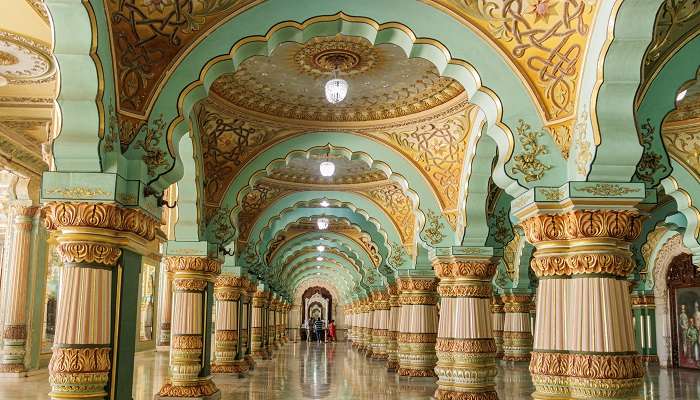
Mysore Palace remains the official residence of the Maharajas of Mysore under the Government of Karnataka’s administration. It safeguards the precious belongings of the Wodeyars, like keepsakes, ornaments, regal attire, and works of art. Despite being open to the public, the former royal family still uses a portion of the palace. Some living spaces can be found in the Residential Museum within the complex. The palace has been a key feature of the Mysore Dasara Festival since the 16th century. It attracts over 6 million visitors annually and offers a glimpse into Mysore’s prestigious past and regal legacy.
Further Read: Sand Museum Mysore
If you have enjoyed reading about Jaganmohan Palace, plan your trip to Mysore to witness its splendour. It’s a captivating palace that demands to be seen and experienced fully, as it truly deserves your undivided attention.
For our editorial codes of conduct and copyright disclaimer, please click here.
Cover Image Source: Shutterstock
Frequently Asked Questions About Jaganmohan Palace
What is the date of construction, and who was the patron of Jaganmohan Palace?
Jaganmohan Palace was built in 1861 during the reign of Krishnaraja Wodeyar III.
What caused the creation of Jaganmohan Palace as a royal dwelling?
After a tragic fire ruined the original Mysore Palace during Princess Jayalakshmanni's wedding in 1897, Jaganmohan Palace was built as a new home for the royal family.
What should visitors anticipate finding within Jaganmohan Palace?
Visitors can discover detailed carvings, vibrant murals, and an extensive collection of more than 2,000 artworks that display Mysore's cultural heritage inside Jaganmohan Palace.
What is the location of Jaganmohan Palace in Mysore, and how can visitors get there?
Jaganmohan Palace is located across from the City Bus Stand on Jagan Mohan Palace Road in Chamrajpura, Mysuru. It can be easily reached by air, train, and road.
What is the present condition of Mysore Palace, and who is in charge of it?
Mysore Palace continues as the designated home of the Maharajas of Mysore.
People Also Read:
Offbeat Places In Mysore Coimbatore To Mysore Road Trip Ooty To Mysore Road Trip
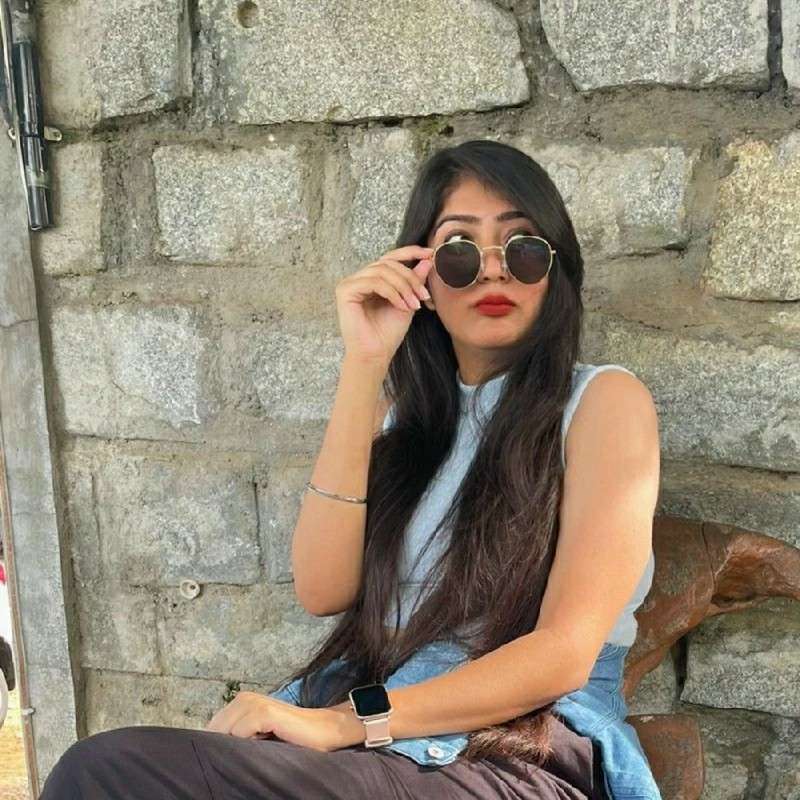
Experience the world through captivating stories of adventure and travel. As a senior content writer, I bring my passion for exploration to life, crafting tales that take you on a journey. With my words, you’ll feel the thrill of discovery and the joy of experiencing new cultures. Let me turn your imagination into a reality with stories that inspire you to explore and embrace the world.











